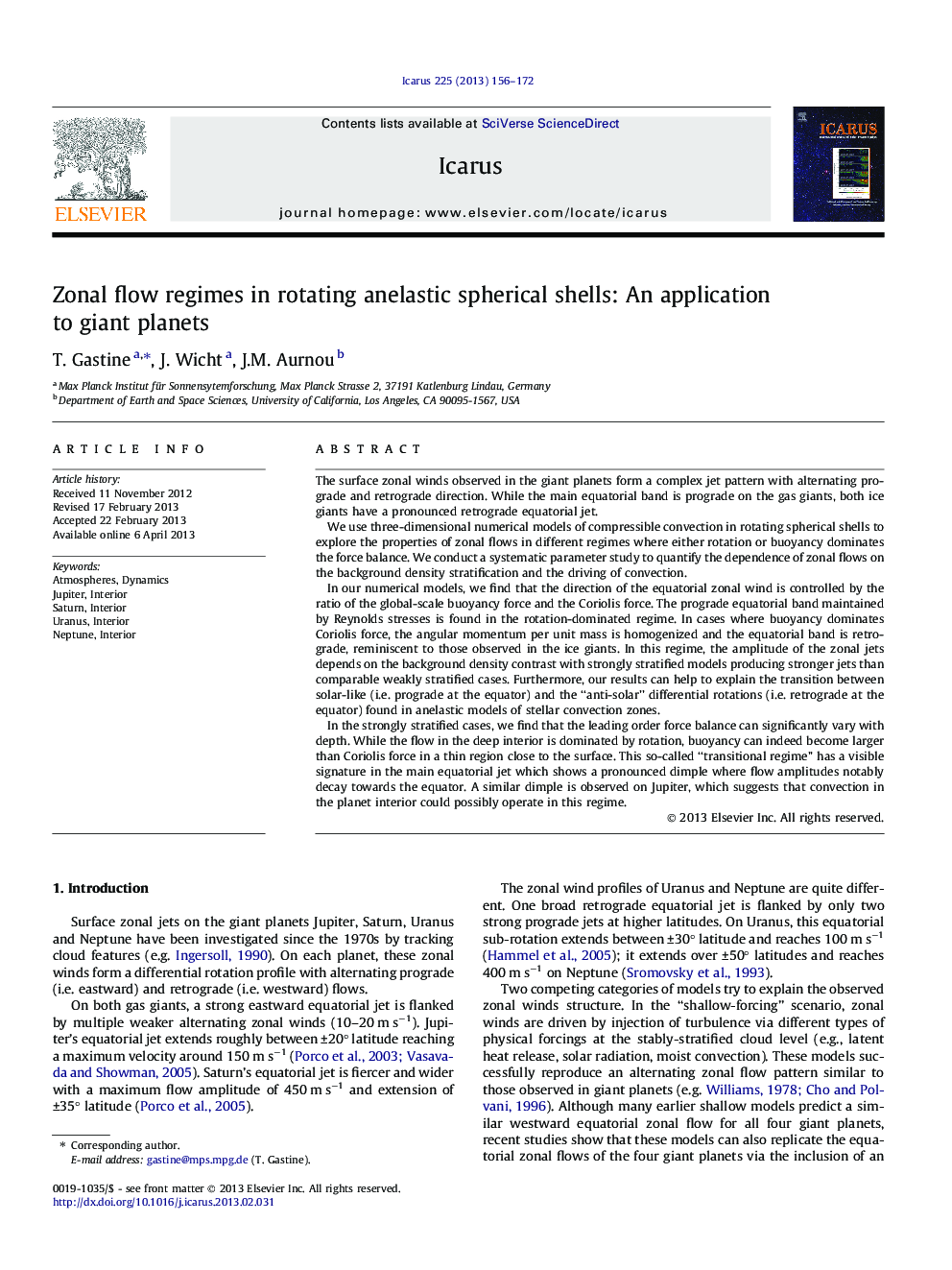| کد مقاله | کد نشریه | سال انتشار | مقاله انگلیسی | نسخه تمام متن |
|---|---|---|---|---|
| 1773195 | 1021122 | 2013 | 17 صفحه PDF | دانلود رایگان |

• We study different zonal flow regimes in rotating anelastic spherical shells.
• We carry out a systematic parametric study for various density stratifications and convective driving.
• When buoyancy becomes comparable to Coriolis force, a reversal of the direction of the equatorial jet is found.
The surface zonal winds observed in the giant planets form a complex jet pattern with alternating prograde and retrograde direction. While the main equatorial band is prograde on the gas giants, both ice giants have a pronounced retrograde equatorial jet.We use three-dimensional numerical models of compressible convection in rotating spherical shells to explore the properties of zonal flows in different regimes where either rotation or buoyancy dominates the force balance. We conduct a systematic parameter study to quantify the dependence of zonal flows on the background density stratification and the driving of convection.In our numerical models, we find that the direction of the equatorial zonal wind is controlled by the ratio of the global-scale buoyancy force and the Coriolis force. The prograde equatorial band maintained by Reynolds stresses is found in the rotation-dominated regime. In cases where buoyancy dominates Coriolis force, the angular momentum per unit mass is homogenized and the equatorial band is retrograde, reminiscent to those observed in the ice giants. In this regime, the amplitude of the zonal jets depends on the background density contrast with strongly stratified models producing stronger jets than comparable weakly stratified cases. Furthermore, our results can help to explain the transition between solar-like (i.e. prograde at the equator) and the “anti-solar” differential rotations (i.e. retrograde at the equator) found in anelastic models of stellar convection zones.In the strongly stratified cases, we find that the leading order force balance can significantly vary with depth. While the flow in the deep interior is dominated by rotation, buoyancy can indeed become larger than Coriolis force in a thin region close to the surface. This so-called “transitional regime” has a visible signature in the main equatorial jet which shows a pronounced dimple where flow amplitudes notably decay towards the equator. A similar dimple is observed on Jupiter, which suggests that convection in the planet interior could possibly operate in this regime.
Journal: Icarus - Volume 225, Issue 1, July 2013, Pages 156–172